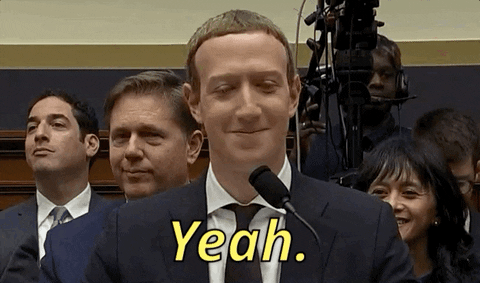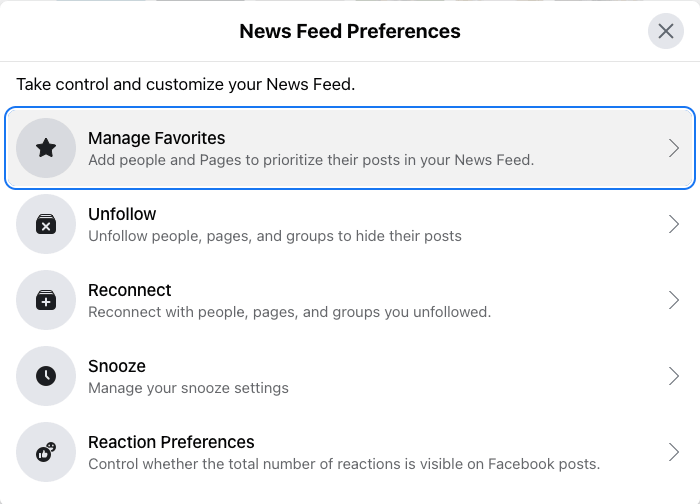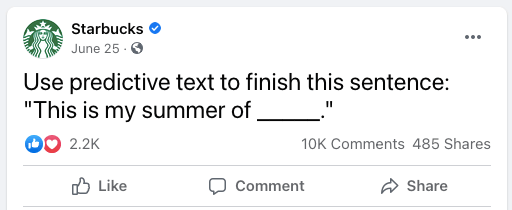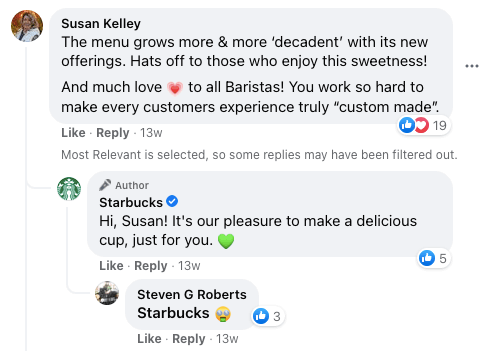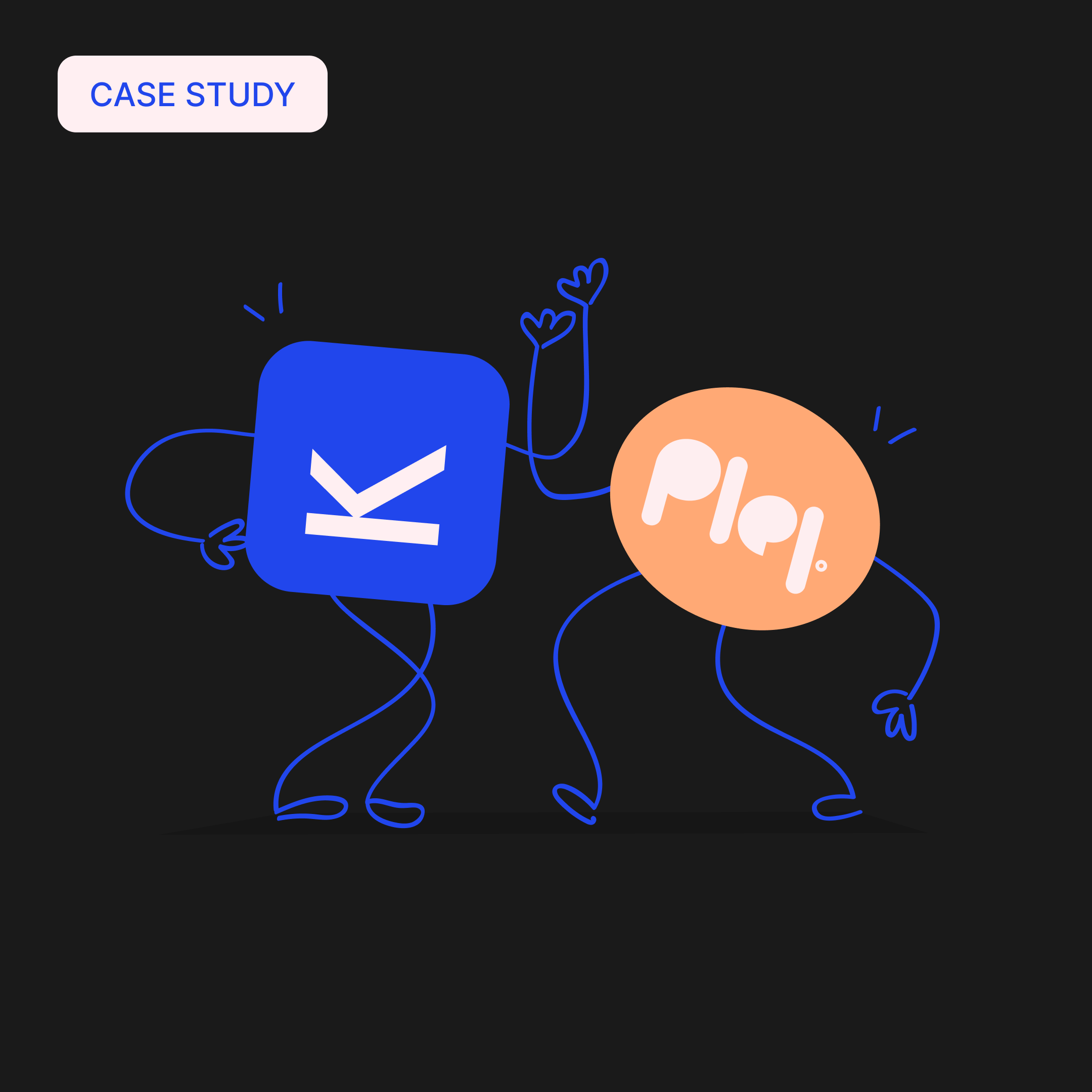The Facebook algorithm gives marketers the creeps, and they treat it like the biggest enemy of their social media strategy. Is this unseen power doing everything it can to make your posts invisible?
There is one solution – you have to discover the algorithm’s strengths and weaknesses to outwit it. But, unfortunately, the Facebook algorithm is pretty smart. It constantly changes and has never revealed all of its cards.
This guide will show you how to increase your organic traffic numbers, what mistakes are red flags for the Facebook algorithm, and how they might be cutting off your reach.
What is the Facebook algorithm?
Every time you check your feed, Facebook decides which posts to display. There’s a Facebook algorithm behind this that constantly predicts which posts will be the most valuable for you.
The posts don’t appear in chronological order. Instead, the Facebook algorithm is made up of a set of calculations and, based on them, it puts the posts they think you’ll enjoy most at the top of your feed. So some of the posts will appear, some of them won’t (even if they are about your friends).
Just imagine the difficulty brands have in trying to get their posts seen by the largest possible audience. Some marketers claim that everything is designed just so that you have to pay to promote content, and the fact that the algorithm is supposed to make sure you see the most valuable and meaningful posts is just a cover story.
However, Facebook claims that without rankings, users’ feeds “will be flooded with content they don’t find as relevant or interesting, including overly promotional content or content from acquaintances who post frequently, which can bury the content from the people they’re closest to.”
We’ll never know, but one thing is for sure – we have to understand the Facebook algorithm at least a little bit in order to be able to try to predict its actions.
How does the Facebook algorithm work?
Let’s begin with the ultimate explanation of the Facebook algorithm process. If you understand it, you will also know what activities can attract the algorithm’s attention, rank your content higher, and have favorable outcomes for your posts.
It is your goal to try hard so that the Facebook algorithm will treat your posts as ones that are worth displaying on users’ feeds. So how does Facebook algorithm work? How does it know whether or not your content is valuable?
Probabilities are calculated using various factors, such as the type of relationship between the viewer and the author of the post and how frequently they interact on each other’s posts, etc.
The four ranking factors that Facebook constantly mentions are:
1. Inventory
All of the content available on the platform Facebook calls the “inventory”: posts from your friends, pages you like, groups you have joined, etc.

2. Signals
These are divided into two groups, passive and active, depending on the type of metrics. In short:
- passive signals are those that you can’t click, such as the viewing time and posting time, etc.
- active signals are actions that promote engagement, e.g. likes, shares, comments, and replies (the algorithm attributes more weight to them).
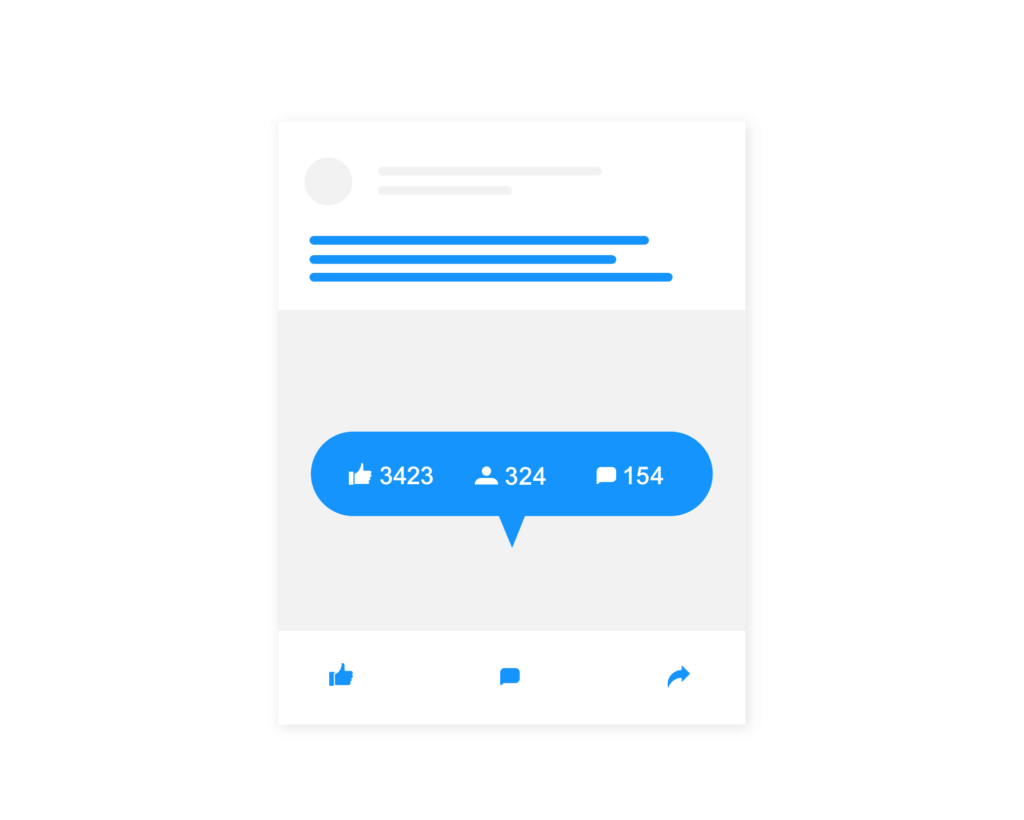
The significant ranking signals that you should consider are:
- engagement
- relationships (who users interact with)
- content type
- and recency (internet connection, when the post was posted, what the current time is)
3. Predictions
Its goal is to predict how the user will react to a particular post, thus the Facebook algorithm considers such factors as what you’ve been searching for on the Internet lately and what you’ve been reacting to, etc.
4. Facebook relevance score
Every piece of content on Facebook gets a score that indicates how relevant it is for a particular user. The higher the Facebook relevance score, the more likely the content is to be displayed to them. The relevance score is different for each user.
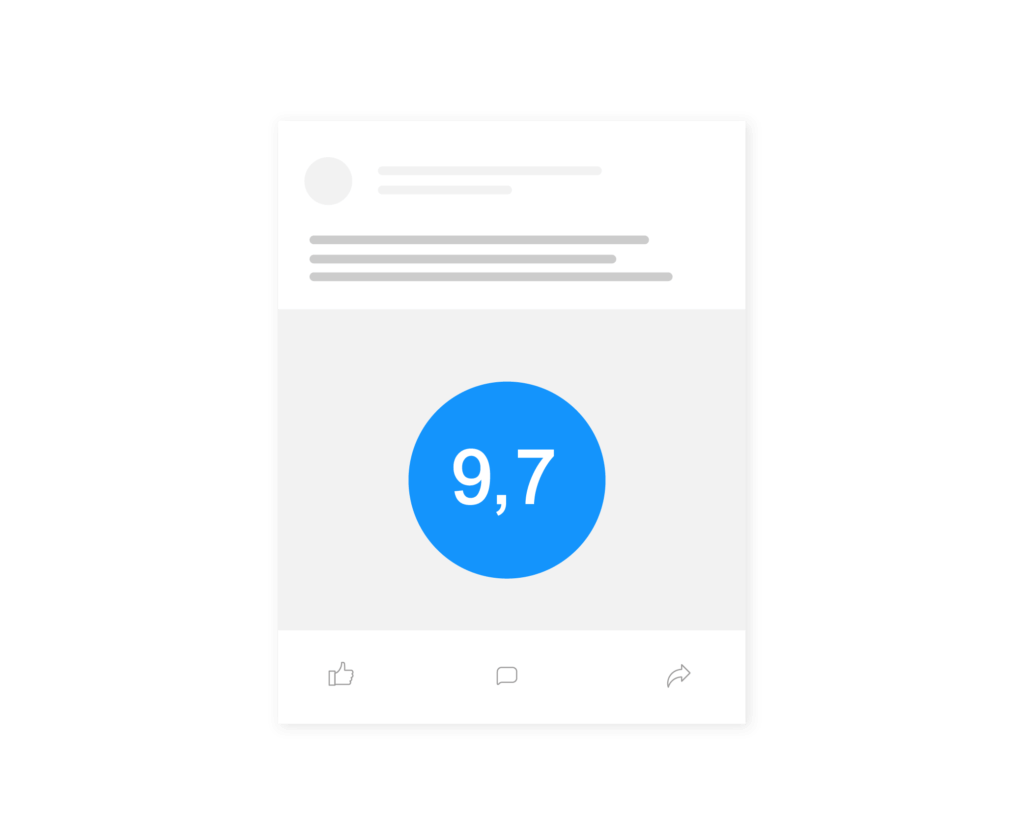
Although these factors are present now, we cannot guarantee that they will always remain the same, as the algorithm constantly evolves. So how does Facebook algorithm work in 2022? Keep reading to learn about the most recent changes.
The most important changes to the Facebook algorithm for 2022
Meet machine learning and improved AI algorithms
By 2022, the Facebook algorithm has been getting smarter and smarter, which is both good and bad news. There is no single algorithm that always calculates rankings in the same way. It’s more like a multi-layer machine learning algorithm that, in short, learns from its mistakes to make more precise decisions.
Facebook introduced a feature that allows users to customize what appears on their News Feeds. Newly launched features like the Feed Filter Bar have an impact on the Facebook algorithm which takes into account the user’s settings first. User surveys are a big factor in determining what they see and what they don’t.
With this change, Facebook claims that the main area of focus is to provide users with value for the whole time they spend on the platform.
What does this mean in practice? Focusing on what it deems as “meaningful interactions”, the Facebook algorithm now prioritizes and puts such interactions first in the News Feed. This way, the content posted by friends has priority/ is prioritized over posts from publishers (not good news for marketers).
Other changes:
Facebook prioritizes original sources
Due to Facebook’s emphasis on high-value content, it now prioritizes content from original sources. As a result, those who publish original stories will see a boost in News Feed position, while publications that don’t, will be demoted.
Ads and Apple
After launching a new Apple iOS update, iPhone users can opt in or out of data sharing. Facebook claims this may significantly limit all marketing efforts.
Facebook research already shows that small businesses lost 60% of their sales for every dollar spent when their own data couldn’t be used to find customers on the platform.

The importance of quality content still remains.
Video content is going to be pushed aside in favor of content that engages users. Thus, posts that spark conversation between users and those with longer comments will be the algorithm’s favorites.
Reactions over likes
Since 2017, Facebook algorithms have been prioritizing reactions (hearts, angry faces, etc.) over typical likes. In 2022, this trend will get stronger.
What do these changes mean for marketers?
Probably nothing good. They may notice a significant decline in the reach of organic posts. They might also have to put much more effort into getting their posts noticed. Furthermore, their expenses on effective advertising may be higher.
On the other hand, improved AI and machine learning can cause the algorithm to balance the interests of both advertisers and consumers.
Therefore, creating a positive ad experience will be even more important now – ads that deliver the most value will win, hence content needs to be considered extremely valuable (!) for its target audience.
Why does the Facebook algorithm play such an important role in social media marketing?
It’s probably one of the most critical (digital) factors you don’t have control over that decides if your content gets noticed and your social media strategy is successful.
If you ignore the Facebook algorithm, it might negatively impact the organic reach of your posts. As a result, they will perform poorly, and you’re going to wonder what the cause is.
So how does Facebook algorithm work? Let’s make it a bit clearer for you by walking you through the following tips.
22 best tips to outsmart the Facebook algorithm
1. Share high-quality content
You already know that Facebook puts quality over quantity. That is why you should put considerable emphasis on high quality content. The best online marketing strategies begin with great content.
Even better if you diversify it, which will encourage your audience to follow you. Then, the chain is straight – the more interactions, the easier it is to reach out to new people. Keep up with trends and observe what is happening around you. Make your account enjoyable and put its value first – just like Facebook does.
2. Be regular
There is one thing that no social media platforms algorithms like – irregularity. So if you only publish content once in a while, don’t count on having a high organic reach.
However, never forget that the key to social media success is consistency AND quality.
This is difficult to achieve – planning all of your content and keeping it valuable is challenging. Nevertheless, we know the solution.
You should take advantage of social media management tools available on the market. They can streamline your content management process a lot. Most of them provide an intuitive interface with a drag and drop calendar that makes scheduling enjoyable. Believe us, social media tools like Kontentino can be a real game-changer.
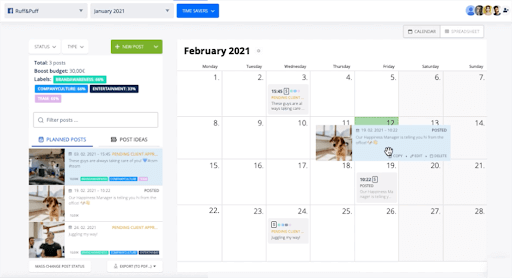
3. Know your audience
This is probably one of the most important things you should do to get a step closer to outsmarting the Facebook algorithm. We certainly don’t have to tell you how important knowing your audience is when you are preparing and creating a social media strategy.
Understanding your audience will enable you to find material that will resonate with them and elicit a positive response. Furthermore, doing so makes sure that you don’t post any content that will lead users to lose interest in your organization.
You can use Facebook Audience Insights to find more people like those in your current audience.
And if you’re ever looking for more insights even for ads audiences, check out our Facebook ads target audiences blog post.
4. Choose the best time to post on Facebook
Having an idea of when your posts tend to perform best would be very helpful. However, because there are so many variables involved, it’s difficult to predict precisely how things will play out.
A good idea for how to determine the best time to post on Facebook is to analyze your Facebook Insights. Consider when your target demographic is most likely to be online and only post during these times.
5. Activate the audience
According to Facebook, posts that spark conversations among users can bump your content up in the rankings. So making posts that prompt people to stop scrolling and start engaging with one another should be your goal. Think about conversation starters, ask questions, inspire, or educate. There are many possible ways to get people talking.
You should encourage followers to engage with your content, but you must do it without any pressure, otherwise the results will be counter-productive.
6. Stay away from engagement bait
Basically, “engagement bait” refers to social media posts designed to get you to interact with innocuous content through shares, reactions, likes, and comments.
“Like this post if you agree.” The good thing is that there are fewer posts like this visible on Facebook these days, and brands are increasingly trying to drive users’ attention in unforced ways.
Keep in mind that, as a result of the new algorithm, Facebook has also stated that they will no longer tolerate people who break their rules to generate more engagement on posts. So be careful with engagement-based content because sometimes the line is thin.
7. Reply to customers’ comments and give your brand a personal touch
Getting back to your customers’ questions and replying directly to comments helps build your business image since it makes you appear favorable and gives your brand a personal touch.
A user’s response to one of your posts is the first step toward creating the type of worthwhile engagement we discussed above. By replying to their comments, you inform Facebook again that your content is relevant to users. As a result, more of your company’s content will appear in their News Ferepleds. It makes sense, doesn’t it?
8. Use hashtags (but keep the balance)
Hashtags will lead traffic to your content and make you more visible (especially to people searching for specific topics). By doing so, you can more easily reach out to the target audience and get noticed by people who don’t know your brand yet.
However, there is a condition: make sure you carefully choose which hashtags you use. Don’t overuse them (no more than two or three at a time). By testing them regularly, you’ll discover which ones work best for you.
9. Think about Facebook ads
A combination of organic efforts with paid Facebook ads can be a goldmine. Ads are flexible and scalable – two things that are difficult to achieve through organic methods alone.
Through organic reach, you can build a community around people who already follow you, but it will be tough to reach out to people who don’t know you yet. Remember that organic reach doesn’t work on its own.
Paid Facebook ads allow you to target your potential customers more precisely and reach broader audiences without the risk of the algorithm totally cutting you off.
10. Build local community
Facebook is putting a lot of emphasis on local communities now, so take advantage of that by trying to focus on your local area.
Small businesses will be able to create content focused on the local community without any difficulty. However, it might be more challenging if your brand is more extensive and your target audience is much broader.
Alternatively, if your main target group isn’t a local community, you can create content focusing on a particular region – one where your company already has a strong presence.
11. Verify your Facebook page
Getting the Facebook seal of approval is another way to trick the Facebook algorithm. This is valid information that increases your page’s authenticity and proves that you already have a solid professional image.
It helps rank your posts higher, especially among other similar content. Consequently, you’ll become the rank winner more often.
Are you wondering how to go about that? Check out our guide on how to get verified on Facebook for more information.
12. Monitor social media analytics and get the big picture
Like with all marketing activities, those on Facebook also need to be based on data. Facebook’s algorithm cannot be outwitted by guesswork.
Check Facebook Insights and try to understand what works and what doesn’t. Besides getting information about such metrics as audience engagement, you can also find out when is the best time to reach out to those you want to freach. There is a lot of data available to give you the big picture and help you improve your performance in return.
13. Post Facebook Stories
You might have the feeling that very few people are using Facebook Stories. Nevertheless, the Facebook algorithm appreciates you being active in this space.
Why not give them a shot? You can use stories to create engaging content that is authentic. The only thing you need is a relevant idea to engage your audience.
14. Use high-quality images in your posts
People are more likely to engage with content that has visually appealing images, so this is something you should definitely take advantage of. Using high-quality images will also make your posts look more professional and give the impression that you are a credible source of information. This means that you should certainly include images, so take the time to find or create appropriate, high-quality ones for your posts.
15. Engage with your followers in more ways than just responding to comments
Show that your brand is engaged. It’s not just about responding to comments on your posts, but also liking and commenting on other people’s posts in your industry. This is the answer to how to increase engagement on Facebook.
Also, don’t forget to post interesting content that will encourage people to engage with you. If you can get people talking, you’re on the right track.
16. Don’t be afraid to try out new features
No matter if it’s about new options, formats, types of content, etc., you should always be testing something new on Facebook. The algorithm is designed to show users the content that they’re most likely to engage with, and part of that is based on how recent a post is. So by constantly testing new things, you can ensure that your posts are more likely to be seen by your target audience.
Features on Facebook come and go, so use them while you can! Failing to do so will only make it harder for you to achieve your goals.
17. Leverage user generated content
UGC can help you increase your chances of being seen by the algorithm. When people post about your brand or product on their own page, it increases the chances of their friends seeing it as well. Furthermore, UGC is often more trustworthy than traditional advertising, so this is something you should definitely leverage when you have a chance – it can be a great way to connect with your target audience.
To make others feel appreciated, you can even repost their own content on your page as long as you give them credit. This will not only make them feel good, but you’ll also get some new UGC for social media. Everybody wins.
18. Adjust your posts to Facebook
Facebook has its own formatting options you should be aware of. For example, you can use native videos instead of link posts, which have been shown to perform better. By making use of all the features that Facebook has to offer, you can increase your chances of success. Make sure you use the right social media post sizes for this platform too, as this can also make a difference.
19. Make use of Facebook Reels
Reels are a new feature on Facebook that allows you to create short, engaging videos. You may have seen them on Instagram already, but they’re now available on Facebook as well. Like with many new features, Facebook seems to be prioritizing Reels videos and promoting them more in users’ feeds.
Therefore, if you’re looking for a way to get more eyes on your content, Reels are a great option. Making them is easy and fast, so don’t miss out on this feature.
20. Use Facebook Live to reach new audiences
This allows you to interact with viewers in real-time, creating a more personal connection. Furthermore, Facebook Live videos are often given priority in the News Feed, so they are definitely something you should test out. You can use Live to give your followers a behind-the-scenes look at your brand, host Q&As, or just show them what’s going on in your life.
21. Spark controversy
One way to create a buzz about your brand is by being a little controversial. This can be done by taking a stand on a hot-button issue, or by creating content that is sure to get people talking. However, you need to be careful with this approach, as it can easily backfire if done incorrectly.
You could try, for example, sharing an article that goes against popular opinion or posting a provocative image. Just make sure that you are prepared to handle the negative (if any) feedback that may come your way.
22. Analyze your performance to draw conclusions
Finally, one of the most important things you can do to increase your chances of success is to adjust your posts according to Facebook’s Insights. This data can tell you a lot about who your target audience is, what time of day they’re most active, and what kind of content they’re most likely to engage with.
It’s actually analytics that will provide your most valuable insights because you can track what’s working and what’s not, then try to outsmart the Facebook algorithm based on that. By analyzing your performance, you can make the necessary changes to ensure that your content is being seen by those people who are most likely to engage with it.
The Facebook algorithm should not be your enemy
Facebook algorithm changes are a never-ending story.
It is no wonder that marketers try to find out how does Facebook algorithm work to have a positive impact on their posts’ reach.
If keeping up with the latest Facebook algorithm updates is still over your head, try to focus on getting to know your target audience as best you can. Then, if you create content in line with the audience and they react to it enthusiastically, you’ll quickly notice that the Facebook algorithm is no longer your enemy.

